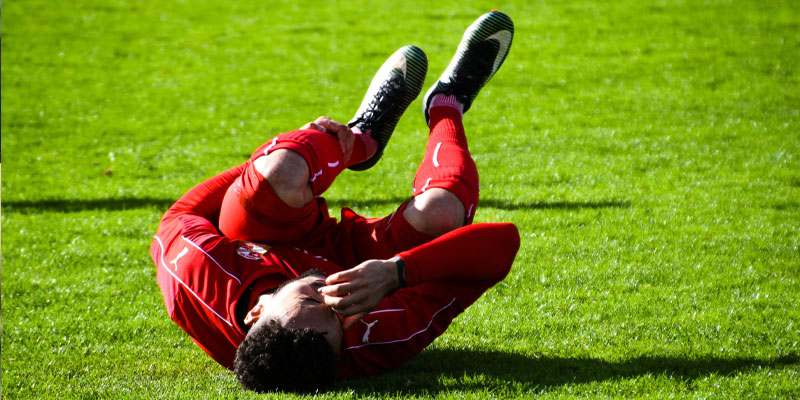Have you or one of your loved ones experienced a concussion? There are 200,000 concussions annually in Canada [1].
A concussion is a traumatic brain injury that occurs when the brain is moved back and forth in the skull, often due to a force on the head, neck, or elsewhere on the body. Although it may accompany a trauma to the head, this is not required in order to sustain a concussion.
Sports-related concussion is “among the most complex injuries in sports medicine to diagnose, assess and manage [2].” There is no single test that can definitively provide a diagnosis of concussion. There is no blood test, no saliva test, no picture test or even no eye-tracking, pupil size or balance test. None exists yet that on its own can objectively diagnose concussion [3]. People living in more remote communities were significantly more likely to experience a concussion than those based in cities, noting rural rates could be as high as 1,400 per 100,000 people [4].
Symptoms of a concussion can include headache, dizziness and balance problems, fatigue, nausea/vomiting, visual disturbances, sensitivity to light and noise, emotional changes, confusion and brain fog. These symptoms are often accompanied by neck pain, and can be immediate or delayed.
We have had a few questions lately if we can help if you have sustained a concussion. The answer is YES!
Physiotherapy treatment helps ensure a safe, timely return to play or other high-risk activities and to help prevent persistent concussion symptoms. Your physiotherapist will use a combination of rest and activity modification, visual/vestibular exercises, and graded exposure to physical activity to ensure your complete recovery.
If you have any questions please let us know. We are happy to help you (or your family!) get back to feeling good and doing what you love.
Here are some additional “Children and Youth” concussion stats from Brain Injury Canada (https://braininjurycanada.ca/en/statistics/#Concussion):
- Ice hockey was the most common sports and recreation-related activity with reported concussions or other TBIs among males aged 5 to 14 years. Rugby was the most common for the older males.
- Ringette was the most common sports and recreation-related activity with reported concussions or other TBIs among females aged 10 to 19. It is also worth noting that among females in all age groups shown, equestrian sport/horseback riding was also among the most common non-contact sport with reported concussions or other TBIs.
- Sledding/tobogganing was among the most common sports and recreation-related activities with reported concussions or other TBIs for children aged 5 to 9 years (3rd most common after ice hockey and physical education class among boys, and 2nd after ice hockey among girls).
- All-terrain vehicle (ATV) use was the leading cause of moderate to more severe TBIs (i.e., showed the lowest percentage of concussions among all TBIs) among almost all children and youth, with the exception of females aged 5 to 9 (for whom it was equestrian sport/horseback riding) and males ages 10 to 14 (for whom it was baseball) [5].
- In 2013, Hockey Canada implemented a new rule to prohibit body checking in the peewee age group (11 and 12-year-olds) and younger. This change has resulted in a 70% reduction in the risk of concussion, or about 4,800 fewer concussions across Canada [6].
- Children under five were the most likely demographic to experience a concussion, followed by women over the age of 65 [7].
- The number of physician office or emergency room pediatric visits for concussion-related complaints has quadrupled in Ontario since 2010 [8].
Resources:
[1] SCSC, Evidence, 20 February 2019, 1855 (Dr. Charles Tator, Director, Canadian Concussion Centre – University Health Network).
[2] McCrory et al., Consensus statement on concussion in sport—the 5th international conference on concussion in sport held in Berlin, October 2016 (2017) p.839
[3] SCSC, Evidence, 30 January 2019, 1855 (Dr. Roger Zemek, Director, Clinical Research, Children’s Hospital of Eastern Ontario).
[4] Langer L, Levy C, Bayley M. Increasing Incidence of Concussion: True Epidemic or Better Recognition? J Head Trauma Rehabil. 2020;35(1):E60-E66. Doi:10.1097/HTR.0000000000000503
[7] Langer L, Levy C, Bayley M. Increasing Incidence of Concussion: True Epidemic or Better Recognition? J Head Trauma Rehabil. 2020;35(1):E60-E66. Doi:10.1097/HTR.0000000000000503
[8] SCSC Dr. Roger Zemek, Director, Clinical Research, Children’s Hospital of Eastern Ontario

